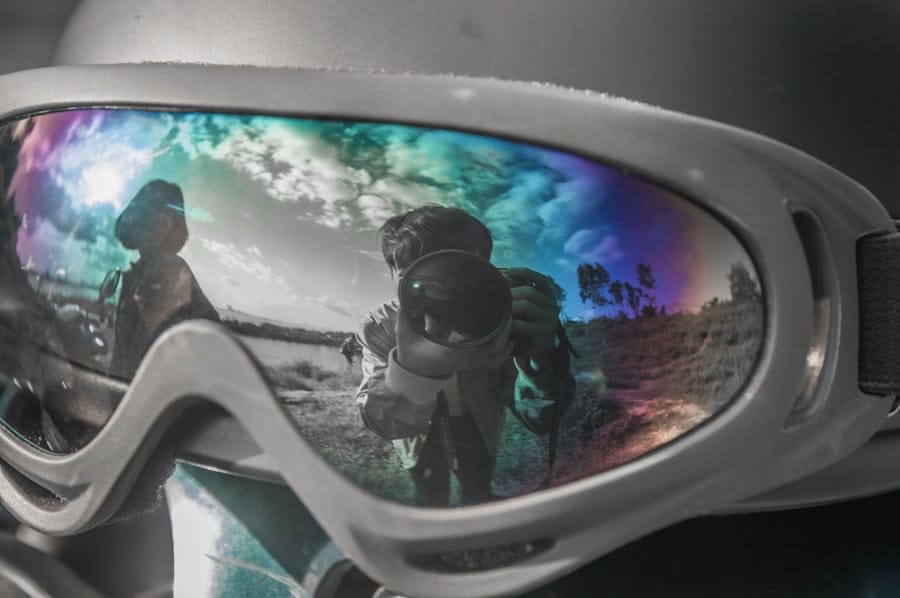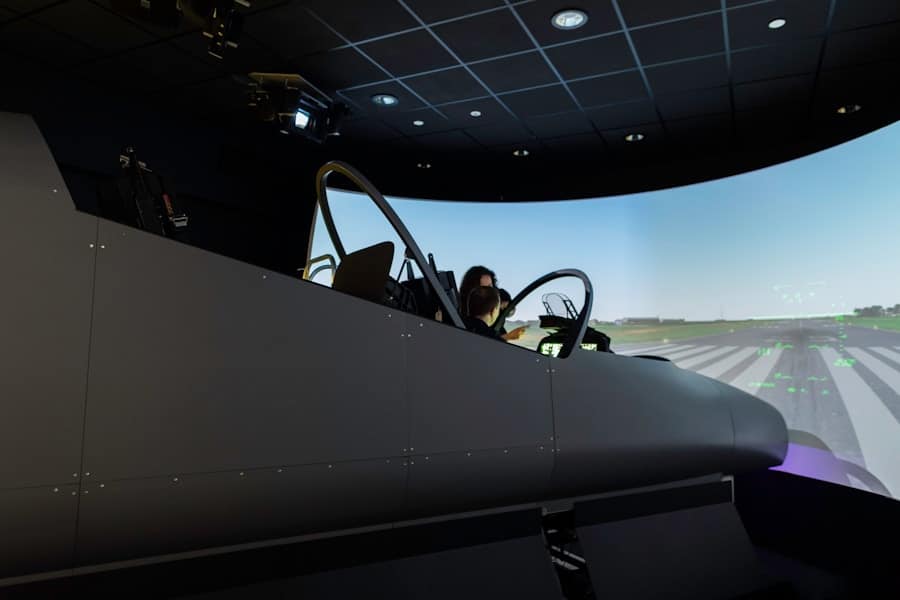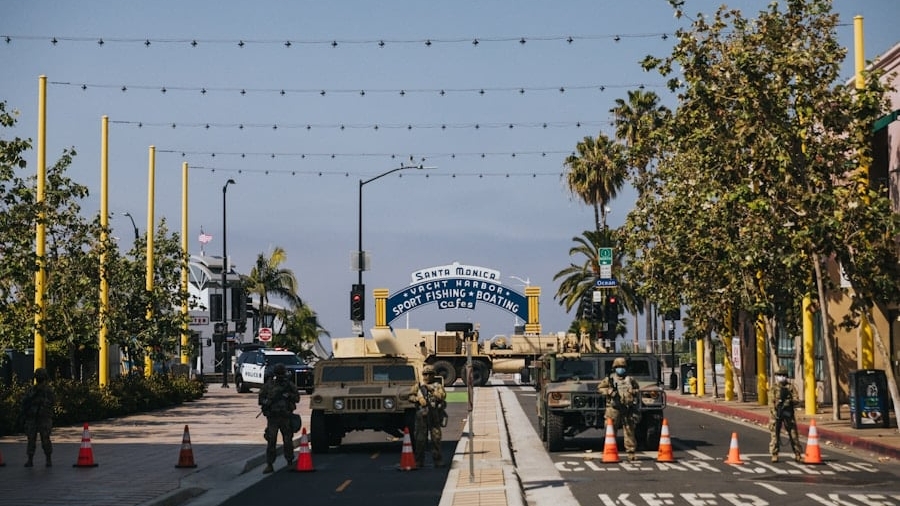Virtual reality (VR) has emerged as a transformative technology in various sectors, and its application in military training is particularly noteworthy. The military has long recognized the importance of effective training methods to prepare personnel for the complexities of modern warfare. Traditional training methods, while effective to a degree, often fall short in replicating the dynamic and unpredictable nature of real combat situations.
VR offers a solution by immersing soldiers in lifelike environments where they can practice skills, make decisions, and experience the consequences of their actions without the risks associated with live training exercises. The integration of VR into military training programs is not merely a trend; it represents a paradigm shift in how armed forces prepare their personnel. By leveraging advanced technologies, military organizations can create realistic simulations that encompass a wide range of scenarios, from urban warfare to counter-terrorism operations.
This immersive experience allows soldiers to engage in training that is both safe and effective, ultimately enhancing their readiness for actual combat situations. As the technology continues to evolve, the potential applications of VR in military training are expanding, promising to reshape the future of defense preparedness.
Key Takeaways
- Virtual reality (VR) is being increasingly used in military training to simulate realistic combat scenarios and improve decision-making and tactical skills.
- The benefits of using VR for military training include cost-effectiveness, safety, and the ability to customize scenarios for specific military units and missions.
- VR allows for the simulation of advanced combat scenarios, such as urban warfare and chemical, biological, radiological, and nuclear (CBRN) threats, providing a more immersive and realistic training experience.
- VR plays a crucial role in improving decision-making and tactical skills by allowing trainees to practice and learn from their mistakes in a safe and controlled environment.
- Customizing VR scenarios for specific military units and missions ensures that training is tailored to the unique needs and challenges of each unit, enhancing the effectiveness of the training program.
The Benefits of Using Virtual Reality for Military Training
Safety First
One of the most significant advantages of using VR in military training is the elimination of physical risks associated with live exercises. In traditional training environments, soldiers may face physical dangers, such as injuries or even fatalities, during high-stakes drills. VR eliminates these risks by providing a controlled environment where trainees can engage in combat scenarios without fear of real-world consequences.
Personalized and Intensive Training
The safety aspect of VR training allows for more frequent and intensive training sessions, enabling soldiers to hone their skills and build confidence. Moreover, VR training can be tailored to meet the specific needs of different military units. For instance, infantry units may require training focused on urban combat tactics, while special forces might need scenarios that emphasize stealth and reconnaissance.
Customized Training for Operational Success
The adaptability of VR technology allows for the creation of customized training modules that reflect the unique challenges faced by various branches of the military. This level of personalization ensures that soldiers receive relevant and practical training that directly correlates with their operational requirements.
Simulating Advanced Combat Scenarios in Virtual Reality

The capability to simulate advanced combat scenarios is one of the hallmarks of virtual reality technology. In a VR environment, military personnel can engage in complex operations that mimic real-world conditions with remarkable accuracy. For example, soldiers can practice navigating through intricate urban landscapes, complete with realistic obstacles and civilian presence, which are critical elements in modern warfare.
This level of detail not only enhances the realism of the training but also prepares soldiers for the unpredictability they may encounter in actual combat situations. Furthermore, VR can facilitate multi-domain operations by allowing soldiers to train in scenarios that involve air, land, and sea components simultaneously. This integrated approach is essential as modern warfare increasingly requires coordination among different branches of the military.
By simulating joint operations in a virtual environment, soldiers can develop a deeper understanding of how their actions impact other units and learn to work collaboratively under pressure. Such comprehensive training fosters teamwork and enhances overall mission effectiveness.
The Role of Virtual Reality in Improving Decision-Making and Tactical Skills
Decision-making is a critical skill for military personnel, particularly in high-stress environments where time is limited and stakes are high. Virtual reality provides an ideal platform for developing these skills through immersive scenarios that challenge soldiers to make quick and effective decisions. In a VR simulation, trainees can experience the consequences of their choices in real-time, allowing them to learn from mistakes without facing real-world repercussions.
This immediate feedback loop is invaluable for reinforcing effective decision-making processes. Additionally, VR training can enhance tactical skills by allowing soldiers to practice various strategies and techniques in a safe environment. For instance, they can experiment with different approaches to breach a building or respond to an ambush, assessing the outcomes of each tactic.
This trial-and-error process fosters critical thinking and adaptability—qualities that are essential for success on the battlefield. As soldiers become more proficient in their tactical skills through repeated VR training sessions, they are better equipped to handle the complexities of real combat situations.
Customizing Virtual Reality Scenarios for Specific Military Units and Missions
The versatility of virtual reality technology allows for extensive customization of training scenarios tailored to specific military units and missions. Each branch of the armed forces has unique operational requirements, and VR can be programmed to reflect these distinctions accurately. For example, a unit specializing in counter-terrorism may require scenarios that focus on hostage rescue operations in urban settings, while a mechanized infantry unit might benefit from simulations involving armored vehicle maneuvers in diverse terrains.
Moreover, customization extends beyond just the type of scenario; it also encompasses the level of difficulty and complexity within each simulation. Training programs can be designed to gradually increase in intensity as soldiers progress through their training regimen. This adaptive learning approach ensures that trainees are consistently challenged and engaged, preventing stagnation and promoting continuous skill development.
By aligning VR training with specific mission objectives and unit capabilities, military organizations can maximize the effectiveness of their training programs.
Integrating Virtual Reality Training with Traditional Methods

While virtual reality offers numerous advantages, it is essential to recognize that it should complement rather than replace traditional training methods. The integration of VR into existing training frameworks allows for a more holistic approach to military preparedness. Traditional methods such as live-fire exercises, field drills, and classroom instruction provide foundational knowledge and skills that can be enhanced through VR simulations.
For instance, after completing a classroom session on tactics and strategy, soldiers can engage in a VR simulation that puts those concepts into practice. This combination reinforces learning by allowing trainees to apply theoretical knowledge in a practical setting. Additionally, traditional methods often emphasize physical conditioning and teamwork—elements that are crucial for military success but may not be fully replicated in a virtual environment.
By blending VR with conventional training techniques, military organizations can create a comprehensive training program that addresses all aspects of soldier readiness.
Challenges and Limitations of Virtual Reality in Military Training
Despite its many benefits, the implementation of virtual reality in military training is not without challenges and limitations. One significant hurdle is the cost associated with developing and maintaining VR systems. High-quality simulations require substantial investment in hardware, software, and ongoing updates to ensure realism and relevance.
Budget constraints may limit some military organizations’ ability to fully integrate VR into their training programs. Another challenge lies in the potential for technological issues during training exercises. Technical malfunctions or software glitches can disrupt training sessions and hinder learning outcomes.
Additionally, there may be resistance from some personnel who are accustomed to traditional training methods and may be skeptical about the effectiveness of VR simulations. Overcoming these barriers requires a concerted effort to demonstrate the value of VR training through empirical evidence and success stories from early adopters.
The Future of Virtual Reality in Military Training and Warfare
Looking ahead, the future of virtual reality in military training appears promising as technology continues to advance at an unprecedented pace. Innovations such as artificial intelligence (AI) integration could further enhance VR simulations by creating adaptive scenarios that respond dynamically to trainees’ actions. This level of interactivity would provide an even more immersive experience, allowing soldiers to face increasingly complex challenges that mirror real-world combat situations.
Moreover, as VR technology becomes more accessible and affordable, it is likely that more military organizations will adopt it as a standard component of their training programs. The potential for remote training sessions also opens new avenues for global collaboration among allied forces, enabling joint exercises that transcend geographical boundaries. As virtual reality continues to evolve, its role in shaping the future landscape of military training and warfare will undoubtedly expand, offering new opportunities for enhancing soldier preparedness and operational effectiveness on the battlefield.
A related article to How Virtual Reality Simulates Advanced Military Scenarios can be found in the article

